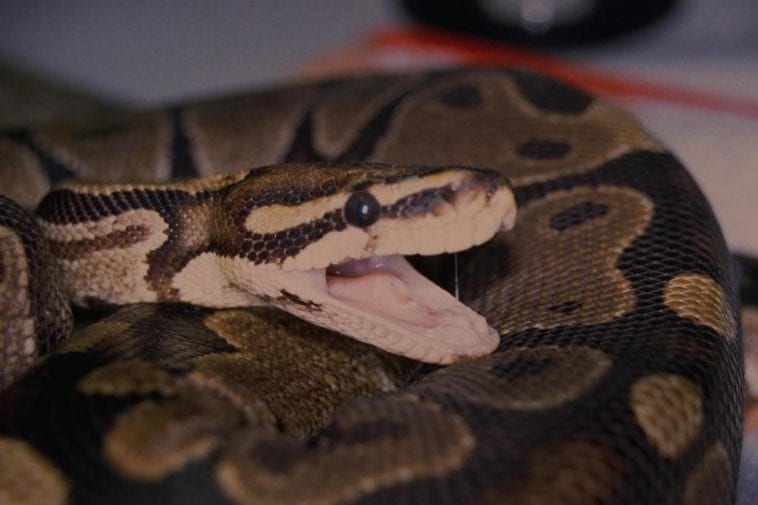Skin infection is something that can be encountered by reptiles, especially snakes. But, this is something that you should be wary about because this type of issue can be resolved. Here are some key pieces of information you should know, as well as essential caring tips for your snake facing a bacterial skin infection problem.
The Basics of Bacterial Skin Infection for Snake
Bacterial dermatitis, or skin infection, is most often prone to snakes that are kept in environments that are too dirty and too moist. Snakes might have inflamed, red skin that is scattered with tiny lesions that look a lot like blisters. Usually, they can be seen on the underside of the snake, so owners might also miss them quite easily. These blisters can be filled with bacteria-ridden fluid if treatment is not done right away. These can progress to skin damage, septicemia, or, worse, death.
Snakes that are kept in conditions that are too dry, with a lack of access to humidity, can retain their skin whenever they shed. They can also develop bacterial infections of skin from the build-up of the debris of retained skin pieces.
A Deeper Look At Bacterial Dermatitis
Bacterial dermatitis is scientifically defined as an infection of the skin that can be superficial or much deeper. There are many names used by snake owners for this type of disease: shell rot, blister disease, belly rot, and septicemic cutaneous ulcerative diseases.
This problem is very common among captive snakes, especially boa constrictors, ball pythons, and corn snakes. The leading cause is linked to poor management, as in particular, temperature levels and humidity levels are not at the appropriate levels.
If these snakes have overly moist conditions or having a too wet substrate can be the most usual reason for developing skin infections. Even water snakes and garter snakes have an even higher risk of getting this skin problem because they usually have problems in drying themselves off.
A warning for snake owners, bacterial skin infection can appear very similar to fungal diseases and burn lesions. This is why a consultation with a trusted and licensed veterinarian is important, as this will lead you to the correct diagnosis.
Bacterial skin infections appear in specific localities in the body, usually one or two major areas only. This is said to come from poor husbandry and a failure to provide them with the appropriate living requirements that they need. For instance, the owners messing up the required temperatures, providing too much humidity, not cleaning the cage more often, and not having enough substrates in the cage can lead to these infections.
What Does Bacterial Dermatitis Look Like?
In its early stages, bacterial skin infection for snakes appears as blisters and pustules. When they get too filled with liquids, they will rupture and become an open wound. When a wound is exposed, bacteria get into contact and spreads through the snake. The bacteria will sink in through the skin, which means delaying treatment will significantly worsen the snake’s condition.
Oftentimes, the bacteria that cause these skin infections are Gram-negative. There also will be a wide variety of bacteria in this category, which will then lead to disease. Mixed infections can lead to more than one bacteria is not a weird thing.
Generally, a large percentage of this bacterial dermatitis is not transmittable to humans. However, some bacterial organisms can be zoonotic to humans, so that a diagnosis can be important in these cases.
Prevention Is Better Than Cure: Watch Out For These Signs
- Discoloration – You might see some discolored brown, greenish-black, red, and yellow scales. To identify this, you should turn your snake on its back so that you can inspect its stomach. If there is a discoloration of the scales, there is a great chance that there is a skin infection of your snake.
- Raised Scales – These can occur where blood may have pooled beneath them.
- Blisters – These vesicles are sized at about half an inch or less in diameter. They are typically seen on the ventral part of the snake, which is the one most often in contact with the bedding. The first blisters are filled with clear-ish and yellow-ish fluid.
Remedies You Can Do For Your Snake
1. Clean the entire enclosure.
The leading causes of this problem are often linked to a lack of hygiene, malnutrition, and inferior methods of husbandry. Therefore, you must sterilize the enclosure and disinfect everything inside. This includes replacing all the soiled substrates for your pet snake. This will help against controlling all the existing symptoms as well as preventing the infection from progressing.
2. Prepare cleaning materials.
These materials include the following:
- Brushes – Medium-sized brushes can be enough to help clean all corners of the enclosure as well as the different crevices of its living space.
- Paper Towels – Paper towels are perfect for spot cleaning the enclosure, as needed.
- Extra Cage – Whenever you clean the enclosure of your snake, you should have a temporary home that they can stay in.
- Putty Knives, Q-tips, Toothpicks, Razor Blades – These materials allow owners to clean all hardened materials or dirt stuck in the narrowest places.
- Terrarium Cleaner – Acquire a cleaner that is appropriate for snakes to help dissolve all hardened substances in the cage.
- Sponges – These can be used for wiping, cleaning, and disinfecting the cage.
- Goggles and Rubber Gloves – Additional tools for cleaning.
- Dishwashing Detergent or Soap – Just ensure that they are not mixed with phenol and pine scent.
- Sand Sifter – This will be used to remove debris and feces from fine-particulate substrates.
A cleaning kit must be exclusively used for maintaining the cleanliness of the tank. The equipment and cleaning tools for cleaning the enclosure must be separated from the rest of their household cleaning supplies.
3. Choose the proper cleaning disinfectants.
A vital step to improving the life of a snake is choosing the proper disinfectant for their enclosure. Owners must get a disinfectant that is powerful enough to wipe out any disease-causing bacteria, fungi, and viruses, but they should not be strong enough to harm the health of your snake.
During their routine cleaning, you should make sure that your relocate your snake to another tank or other room because they are very sensitive to powerful fumes and chemicals.
Before you start using disinfectants, you should remove feces, urates, food, and soaps, because organic matter like these examples can hinder the effectiveness of these cleaning materials. Therefore, one cleaning session using warm water mixed with soap must be done first before using disinfectants. After the application of the disinfectant, you should let it be absorbed for 10 minutes before rinsing them thoroughly.
Allow the complete drying of the enclosure before bringing your snake back to the enclosure and make this habit once a week.
4. Use a sturdy water bowl.
Ensure that the water bowl placed inside the cage must be heavy and sturdy enough that it will always stay in place. A flimsy water bowl will be knocked down easily and lead to too much wetting of the enclosure.
The bowl must be small enough that the snake will not be able to soak inside them. This bowl must be used until the skin condition is fully healed, and the antibiotic treatment, as prescribed by the vet, is completed.
5. Soak Your Betadine Solution Bath
Place your snake in a betadine solution for 20 minutes. You should do this twice a day until you notice the skin infection clearing up. If this does not improve and it just keeps on getting worse, you should re-consult to your trusted herp vet. Remember, not all veterinarians in pet snakes.
In preparing a betadine bath, you should apply betadine into lukewarm water with a 1:10 ratio. After soaking, rinse your snake well and apply them with an antibiotic ointment like Neosporin. You can also use an antibiotic spray for disinfecting.
6. Control The Moisture Levels In The Enclosure
Although controlling the moisture and humidity levels inside their snake can be tedious work, it is imperative to maintain the ideal conditions to prevent this kind of disease. Controlling the humidity in the enclosure is extremely necessary if you own a snake that originally came from a subtropical or tropical region.
Use heat lamps appropriately. They can burn off excess moisture in your snake’s cage, but they can also lead to an environment that is too dry. Cover about 2/3 percent of the top screen of the enclosure to prevent evaporation and control airflow inside. Make sure that you also avoid the exposure of the snake to direct sunlight for a better lifestyle.
Conclusion
Though there are countless efforts that an owner can do, the best way to get rid of bacterial skin infection is to consult a reputable reptile veterinarian and follow through the treatment program that they recommend. This includes different laboratory tests, different topical and injectable medicine, and complete lifestyle improvement for your pet.



